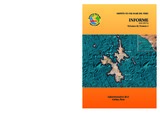Por favor, use este identificador para citar o enlazar este ítem:
https://hdl.handle.net/20.500.12958/2980Registro completo de metadatos
| Campo DC | Valor | Lengua/Idioma |
|---|---|---|
| dc.contributor.author | Castro Gálvez, Javier | - |
| dc.contributor.author | Bances, Sergio | - |
| dc.contributor.author | Torres, David | - |
| dc.date.accessioned | 2016-03-28T19:41:56Z | - |
| dc.date.available | 2016-03-28T19:41:56Z | - |
| dc.date.issued | 2015 | - |
| dc.identifier.citation | Inf Inst Mar Perú 42(3), 2015. p. 282-292 | es_ES |
| dc.identifier.uri | https://hdl.handle.net/20.500.12958/2980 | - |
| dc.description | Informe IMARPE;Vol. 42, N° 3, 2015 p. 282-292 | - |
| dc.description.abstract | En este estudio se muestra la variabilidad oceanográfica que se presenta en Lambayeque. Se evidenció con la generación del evento frío La Niña, después que se registrara el arribo de ondas Kelvin hacia la costa desde fines del 2009, lo que se llegó a considerar como la ocurrencia de un evento El Niño de intensidad moderada. Esta situación propició que los recursos pesqueros se ausentaran de sus áreas habituales de pesca, sumado a la presencia de oleajes anómalos y fuertes vientos que dificultaron las faenas de pesca. Durante el 2010, la Extensión Sur de la Corriente de Cromwell (ESCC) se presentó moderadamente fortalecida en marzo, evidenciada por la relativa alta concentración de oxígeno disuelto en las áreas más profundas de San José, situación inusual para la época en la zona. La proyección de la ESCC se vio intensificada en abril, pero comenzó a debilitarse en junio hasta ausentarse en noviembre, como se puede deducir de los valores de oxígeno encontrados cerca del fondo durante las prospecciones realizadas. | es_ES |
| dc.description.abstract | ABSTRAC: In this study the oceanographic variability in Lambayeque showed. It was evidenced by the generation of cold La Niña event, after the arrival of Kelvin waves to the coast since late 2009, which came to be seen as the occurrence of an event El Niño of moderate intensity. This situation produced that fisheries resources be absent from their usual fishing areas, coupled with the presence of abnormal waves and strong winds that hindered fishing operations. In 2010, the South Extension of the Cromwell Current (ESCC) showed moderately strengthened in March, as evidenced by the relatively high concentration of dissolved oxygen in the deeper areas of San Jose, unusual situation at the time in the area. The projection of the ESCC was intensified in April, but began to weaken in June to leave in November, as can be deduced from the values of oxygen near the bottom found during surveys conducted. Keywords: Oceanographic section, Cromwell, thermocline, Lobos de Afuera Islands | - |
| dc.language.iso | spa | es_ES |
| dc.publisher | Callao | es_ES |
| dc.relation.ispartofseries | Informe IMARPE;Vol. 42, N° 3 | - |
| dc.rights | info:eu-repo/semantics/openAccess | es_ES |
| dc.rights.uri | https://creativecommons.org/licenses/by/4.0/ | - |
| dc.source | Instituto del Mar del Perú - IMARPE | es_ES |
| dc.source.uri | Repositorio Digital IMARPE | es_ES |
| dc.subject | Oceanografía Física | es_ES |
| dc.subject | Fenómeno El Niño | es_ES |
| dc.subject | Corriente De Cromwell | es_ES |
| dc.subject | Isla Lobos De Afuera | es_ES |
| dc.title | Condiciones bio-oceanográficas en San José, islas Lobos de Afuera, Perú. 2010 | es_ES |
| dc.title.alternative | Bio-oceanographic conditions in San José, Lobos de Afuera Islands, Peru. 2010 | es_ES |
| dc.type | info:eu-repo/semantics/article | es_ES |
| Aparece en las colecciones: | Informe vol. 42(3) 2015 | |
Ficheros en este ítem:
| Fichero | Descripción | Tamaño | Formato | |
|---|---|---|---|---|
| INFORME 42( 3)-2.pdf | 13,45 MB | Adobe PDF |  Visualizar/Abrir |
Este ítem está sujeto a una licencia Creative Commons Licencia Creative Commons

